Angela Slatter's Blog, page 40
June 6, 2017
Corpselight Launch Details
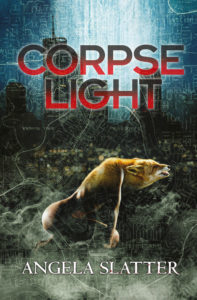 This is not a drill!
This is not a drill!
Corpselight will be launching on Friday 14 July at 6pm. There will be cupcakes and Kim Wilkins will be doing launching duties and we’ll do a retrospective on “From Vigil to Corpselight” (or something).
But most importantly: there will be cupcakes.
Venue: Brisbane Square Library
Bookings: The event is free but you absolutely must book! Phone 07 3403 4166 to reserve your place.
Pulp Fiction are doing the book sales, and they’re also taking pre-orders so if you wanted to pre-order then collect at the launch for signing purposes, that is all good.
June 5, 2017
Corpselight ARC in the Wild!
Or rather, in my hot little grabby hands.
Much excitement.
Thanks to Jess at Hachette for sending it to me.
Many thanks to Alison Goodman, Margo Lanagan and Christopher Golden for the lovely cover quotes.
 [image error]
[image error]
Interview over at A. C. Wise’s Place …
 … with me (quelle surprise).
… with me (quelle surprise).
We talk about Corpselight, short stories, collaborations and awards. Plus other stuff.
The interview, she is here.
Cover Reveal for The Lovecraft Squad: Waiting
 I’m delighted to be part of this mosaic!
I’m delighted to be part of this mosaic!
The Lovecraft Squad: Waiting will be out this Halloween with stories by myself, Brian Hodge, Reginald Oliver, Michael Marshall Smith, Steve Rasnic Tem, Peter Atkins, Richard Gavin, Jay Russell, Thana Niveau, Stephen Baxter and Kim Newman. Cover art by Douglas Klauba.
June 4, 2017
Gorgeous review of Dreaming in the Dark
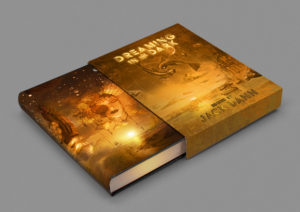 Over at SF Book Reviews Mario Guslandi has very kindly reviewed Dreaming in the Dark, the Jack Dann edited anthology from PS Australia.
Over at SF Book Reviews Mario Guslandi has very kindly reviewed Dreaming in the Dark, the Jack Dann edited anthology from PS Australia.
Readers and reviewers of dark fiction have certainly noticed, during the last years, that the number of Australian authors appearing in books published in the UK and in USA is constantly on the rise, and that the quality of their contributions is usually top notch. This Australian renaissance, reaching out from the secluded world of their national market, is a reason for rejoyce. Many Aussie writers are by now renowned authors perfectly at home in genre anthologies and collections from both sides of the Atlantic Ocean.
Thus, it’s not surprising that British imprint PS Publishing has decided to launch an Australian branch of their company, under the editorship of Jack Dann.
The rest is here.
Ripper on Amazon
My novella, Ripper, is now available on Amazon!
This story first appeared in Stephen Jones’ Horrorology: The Lexicon of Fear.
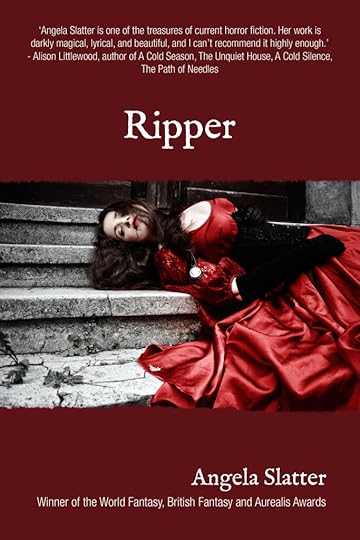
June 1, 2017
The Horror Story We All Know: Stephen Graham Jones on Little Red, Paths, and American Backpackers
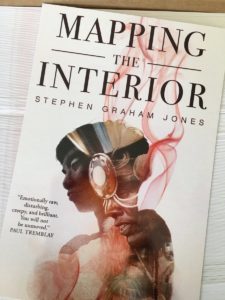 This is a fantastic essay by the amazing Stephen Graham Jones on age-old horror.
This is a fantastic essay by the amazing Stephen Graham Jones on age-old horror.
So two guys are walking across the moors.
Yeah, you’ve heard this one.
Couple of young Americans are backpacking through Europe, and they duck in out of the cold, find themselves in the newly made quiet of a very local bar, where they get what turns out to be some pretty sage advice: beware the moon, keep clear of the moors, and, most important, stay on the road.
This is a story older than either them, the locals, or what we call Europe.
It’s hard to pinpoint exactly when and where we started telling ourselves the Little Red Riding Hood story, but the why is pretty easy: it espouses the safety of the village, the urban, over the known dangers of the unknown forest—the rural, where the hills always have eyes. It’s an admonition we know well, and we don’t even need stories or parents or scary wolves to feel its truth. We just have to listen to our inner ear, each time we’re walking across a bridge, a plank, a log: the middle is where safety is. The only thing to either side is a fall. The only thing off-path, it’s some version of death. It’s a balancing act we’ve even encoded into our religions. Buddhism’s Middle Path between austerity and hedonism, say, or Christianity’s Jesus, who’s neither man nor god, but right in that beatific middle. 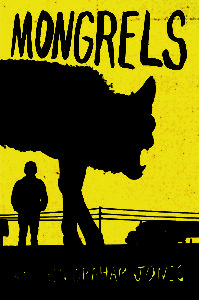
Little Red Riding Hood feels true to us in a way we don’t even think to question. Because of that, it’s circled the globe time and again. Any meme should hope to go so viral. It’s the cautionary tale we hold the most dear, it’s the one that’s had the longest legs, it’s the one that doesn’t lose anything when it’s adapted into culture after culture, era after era, and you keep on finding versions of it the deeper you dig into history, into folktales—into us.
The rest is here over at Tor.com. Highly, highly recommended.
May 30, 2017
Avid Reader: Science Fiction & Fantasy Bookclub – Angela Slatter
 So, I’ll be at the Avid Reader Science Fiction & Fantasy Bookclub chatting with Trent Jamieson on 31 July at 6.30pm! We’ll be talking about writing and Brisneyland, and Vigil and Corpselight, and maybe even a bit about the final Verity Fassbinder books Restoration.
So, I’ll be at the Avid Reader Science Fiction & Fantasy Bookclub chatting with Trent Jamieson on 31 July at 6.30pm! We’ll be talking about writing and Brisneyland, and Vigil and Corpselight, and maybe even a bit about the final Verity Fassbinder books Restoration.
Tickets can be booked here.
Birthday Cake of Dooooooooom
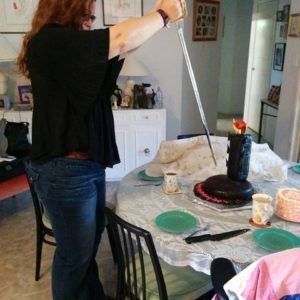 So, I finally got to have a family celebration (eleven days late) last Saturday for my 50th, and it coincided with my sister’s 48th.
So, I finally got to have a family celebration (eleven days late) last Saturday for my 50th, and it coincided with my sister’s 48th.
Foolishly, my lovely sis had asked me twelve months ago “What kind of cake do you want for your Significant Birthday?”
Perhaps facetiously, perhaps not, I said “The Eye of Sauron.”
And I got it. Yes. Best sister in the world. Possibly that also makes me the worst. At any rate, all I can say is that there was cake, a buttload of royal icing, edible stars, a reforged blade, and I am still eating cake and there’s more in the freezer.
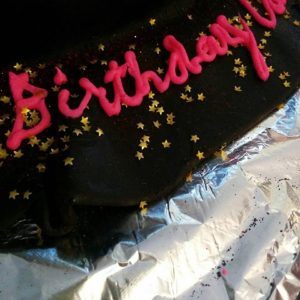
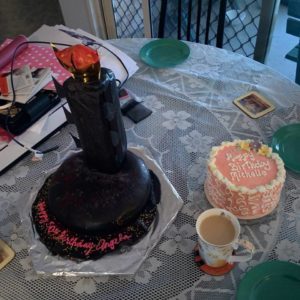
For the purposes of comparison: my cake and my sister’s.
Ararat: Christopher Golden
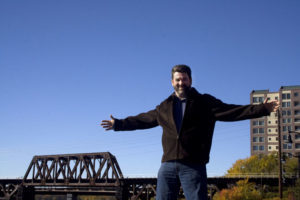 CHRISTOPHER GOLDEN is the award-winning, bestselling author of such novels as The Myth Hunters, Wildwood Road, The Boys Are Back in Town, The Ferryman, Strangewood, Of Saints and Shadows, and (with Tim Lebbon) The Map of Moments. He has also written books for teens and young adults, including Poison Ink, Soulless, and the thriller series Body of Evidence, honored by the New York Public Library and chosen as one of YALSA’s Best Books for Young Readers. Upcoming teen novels include a new series of hardcover YA fantasy novels co-authored with Tim Lebbon and entitled The Secret Journeys of Jack London.
CHRISTOPHER GOLDEN is the award-winning, bestselling author of such novels as The Myth Hunters, Wildwood Road, The Boys Are Back in Town, The Ferryman, Strangewood, Of Saints and Shadows, and (with Tim Lebbon) The Map of Moments. He has also written books for teens and young adults, including Poison Ink, Soulless, and the thriller series Body of Evidence, honored by the New York Public Library and chosen as one of YALSA’s Best Books for Young Readers. Upcoming teen novels include a new series of hardcover YA fantasy novels co-authored with Tim Lebbon and entitled The Secret Journeys of Jack London.
A lifelong fan of the “team-up,” Golden frequently collaborates with other writers on books, comics, and scripts. In addition to his recent work with Tim Lebbon, he co-wrote the lavishly illustrated novel Baltimore, or, The Steadfast Tin Soldier and the Vampire with Mike Mignola. With Thomas E. Sniegoski, he is the co-author of multiple novels, as well as comic book miniseries such as Talent and The Sisterhood, both currently in development as feature films. With Amber Benson, Golden co-created the online animated series Ghosts of Albion and co-wrote the book series of the same name.
As an editor, he has worked on the short story anthologies The New Dead and British Invasion, among others, and has also written and co-written comic books, video games, screenplays, the online animated series Ghosts of Albion (with Amber Benson) and a network television pilot.
The author is also known for his many media tie-in works, including novels, comics, and video games, in the worlds of Buffy the Vampire Slayer, Hellboy, Angel, and X-Men, among others.
Golden was born and raised in Massachusetts, where he still lives with his family. His original novels have been published in fourteen languages in countries around the world.
1.
First of all, what do new readers need to know about Christopher Golden?
I’m not sure where to start. I’m an American novelist, comic book writer, and screenwriter. I’ve also written short stories, a radio play, an animated web series, and loads of other things. I’ve edited numerous anthologies, most recently DARK CITIES. I co-host the pop culture podcast Three Guys with Beards. it’s weird to talk about awards and bestseller achievements, so I’ll leave that to Google. I’ve been published in languages and countries around the world going back to my first novel in 1994. Though I may be best known as a horror writer, I’ve also written fantasy, SF, thrillers, and mystery, for both adults and teens.
2. Your latest novel is Ararat – what
was the inspiration for that book? 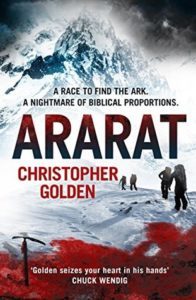
Like most writers, I accumulate ideas and articles and other inspirations. I’d had an article about Noah’s Ark on my desk for years and I was thinking about what to do next. I glanced at the article and thought about Arkologists who spend their lives searching for the ark on Mt. Ararat in Turkey…even though it’s been picked over for ages and there’s no way the ark could be there. It occurred to me that the area has a history of earthquake activity, and that led me down a rabbit hole of research into both the history and the biblical and other ancient stories connected to the ark, Ararat, and Noah. I thought, “what if the ark was there, but it was covered by an earthquake…and what if there was a new earthquake that revealed it again?” I don’t believe the ark is there, by the way. But I loved the idea of what would happen if you had a group of archaeologists and government representatives who come from different faiths and backgrounds, and the tensions that would arise in the presence of the ark…and the demonic-looking thing they find inside it. There are some specific influences in the mix as well, including THE EIGER SANCTION, among others.
3. Can you remember the first story you read that made you think “I want to be a writer”?
I don’t recall one moment of epiphany that made me want to write. There are specific comics, specific TV shows, specific novels that were inspirations, for sure. I started writing short stories in high school. Stephen King and THE TWILIGHT ZONE were probably my biggest influences then. But I do remember the moment I thought “i could write a novel.” I was reading John Skipp & Craig Spector’s THE LIGHT AT THE END. Something about the irreverent tone of that book gave me the push I needed to believe I could do this thin. I never looked back.
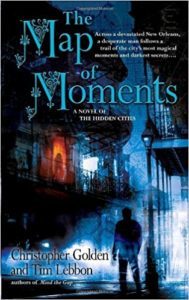 4. When you’re in the mood to read, who do you choose?
4. When you’re in the mood to read, who do you choose?
Something from my To Be Read shelf, of course. But a list of SOME of my favorite authors would include Stephen King, Shirley Jackson, Jack London, Joe Lansdale, James Lee Burke, Walter Mosley, Dennis Lehane, Larry McMurtry, Charlaine Harris, John Irving, and Don Winslow.. Just to scratch the surface.
5. What attracts you to writing horror?
My mother’s been wondering that my whole life. There are so many reasons I love it. Horror has the capacity to carry any sort of story within it: romance, western, SF, thriller, historical, fantasy…virtually any story can be a horror story. I’ve always loved a story that would give me a chill or make me hold my breath, and if I can do that for someone else, that’s a wonderful thing. Horror—fear—is cathartic and exhilarating and life-affirming.
6. What was the inspiration behind the new Hellboy prose anthology, An Assortment of Horrors? 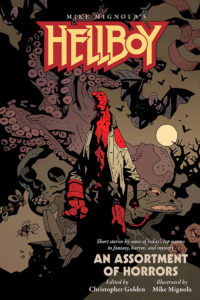
I wanted to edit an anthology that would have an Angela Slatter story in it. But aside from that, I’d done a sort-of trilogy of Hellboy anthologies years ago and it had been a long time since we’d done one. It’s such a wonderful and well-loved character and I’d been wanting to do a new one for years. Mike and I agreed early on that the one rule would be that we wouldn’t approach anyone to contribute who’d written Hellboy prose in the past. It forced us to not rely on the familiar. I’m thrilled with the results. I can’t wait till Hellboy fans get their hands on the book.
7. What was the inspiration behind your Baltimore character?
As much as I feel like I’ve made Baltimore as much mine as it is Mike’s, the original idea (and much of the plot of the novel) came from him. He’d been brewing the character and the story for years, planning it as a graphic novel, until one day he called and told me he’d realized he would never do the graphic novel. He had about 85% of the plot and he wanted to know if I’d like to turn it into a novel. Obviously I did. I loved everything about his original ideas. We share so many of the same interests in folklore and legend. As the comic book series has gone on, I’ve been guiding more and more of the story, but it all balances out. I’ve been saying for years that I know BALTIMORE is the best thing I’ll ever do in comics, but I’m doing JOE GOLEM: OCCULT DETECTIVE now, and that’s building into something really cool as well, so who knows?
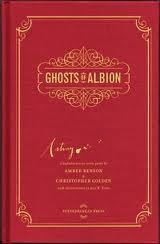 8. Which five writers have been your biggest influences?
8. Which five writers have been your biggest influences?
King. Clive Barker. Rod Serling. Marv Wolfman. Charles de Lint.
9. You can take five books to a desert island: which ones do you choose?
A Prayer for Owen Meaney by John Irving. The Stand by Stephen King. Lonesome Dove by Larry McMurtry. The Sea Wolf by Jack London. Pride and Prejudice by Jane Austen.
10. What’s next for Christopher Golden? 
I’ve just finished an epic fantasy novel with the great Tim Lebbon. BLOOD OF THE FOUR will be out in February from Harper. Tim and I had a blast creating this world and we hope readers will enjoy exploring it with us. I hope folks will follow me on Twitter @ChristophGolden or visit my site at www.christophergolden.com



